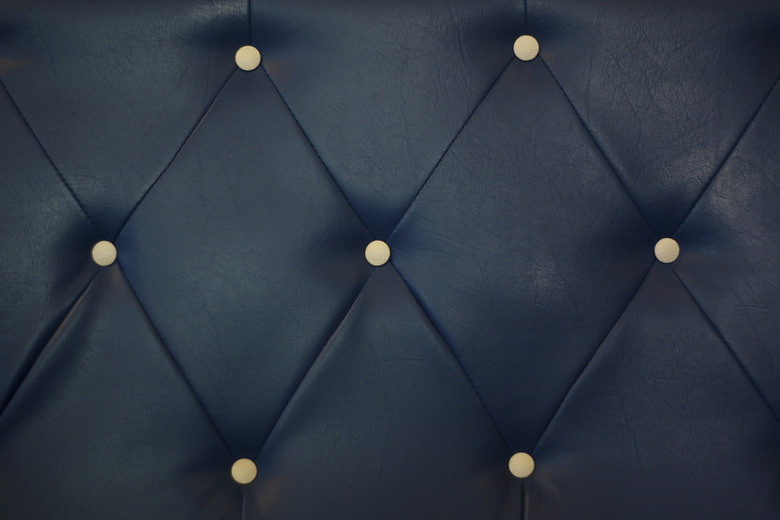Six Properties Of A Parallelogram
Parallelograms are four-sided shapes that have two pairs of parallel sides. Rectangles, squares and rhombuses are all classified as parallelograms. The classic parallelogram looks like a slanted rectangle, but any four-sided figure that has parallel and congruent pairs of sides can be classified as a parallelogram. Parallelograms have six key properties that distinguish them from other shapes.
Opposite Sides Are Congruent
Opposite Sides Are Congruent
Opposite sides of all parallelograms — including rectangles and squares — must be congruent. Given parallelogram ABCD, if side AB is on the top of the parallelogram and is 9 centimeters, side CD on the bottom of the parallelogram must also be 9 centimeters. This also holds true for the other set of sides; if side AC is 12 centimeters, side BD, which is opposite of AC, must also be 12 centimeters.
Opposite Angles Are Congruent
Opposite Angles Are Congruent
Opposite angles of all parallelograms — including squares and rectangles — must be congruent. In parallelogram ABCD, if angles B and C are located in opposite corners — and angle B is 60 degrees — angle C must also be 60 degrees. If angle A is 120 degrees — angle D, which is opposite angle A — must also be 120 degrees.
Consecutive Angles Are Supplementary
Consecutive Angles Are Supplementary
Supplementary angles are a pair of two angles whose measures add up to 180 degrees. Given parallelogram ABCD above, angles B and C are opposite and are 60 degrees. Therefore, angle A — which is consecutive to angles B and C — must be 120 degrees (120 + 60 = 180). Angle D — which is also consecutive to angles B and C — is also 120 degrees. Additionally, this property supports the rule that opposite angles must be congruent, as angles A and D are found to be congruent.
Right Angles in Parallelograms
Right Angles in Parallelograms
Although students are taught that four-sided figures with right angles — 90 degrees — are either squares or rectangles, they are also parallelograms, but with four congruent angles instead of two pairs of two congruent angles. In a parallelogram, if one of the angles is a right angle, all four angles must be right angles. If a four-sided figure has one right angle and at least one angle of a different measure, it is not a parallelogram; it is a trapezoid.
Diagonals in Parallelograms
Diagonals in Parallelograms
Parallelogram diagonals are drawn from one opposite side of the parallelogram to the other. In parallelogram ABCD, this means that one diagonal is drawn from vertex A to vertex D and another is drawn from vertex B to vertex C. When drawing the diagonals, students will find that they bisect each other, or meet at their midpoints. This occurs because the opposite angles of a parallelogram are congruent. The diagonals themselves will not be congruent to each other unless the parallelogram is also a square or a rhombus.
Congruent Triangles
Congruent Triangles
In parallelogram ABCD, if a diagonal is drawn from vertex A to vertex D, two congruent triangles, ACD and ABD, are created. This also holds true when drawing a diagonal from vertex B to vertex C. Two more congruent triangles, ABC and BCD, are created. When both diagonals are drawn, four triangles are created, each with a midpoint E. However, these four triangles are only congruent if the parallelogram is a square.
Cite This Article
MLA
Pinzow, Daniel. "Six Properties Of A Parallelogram" sciencing.com, https://www.sciencing.com/six-properties-parallelogram-8168594/. 24 April 2017.
APA
Pinzow, Daniel. (2017, April 24). Six Properties Of A Parallelogram. sciencing.com. Retrieved from https://www.sciencing.com/six-properties-parallelogram-8168594/
Chicago
Pinzow, Daniel. Six Properties Of A Parallelogram last modified March 24, 2022. https://www.sciencing.com/six-properties-parallelogram-8168594/
